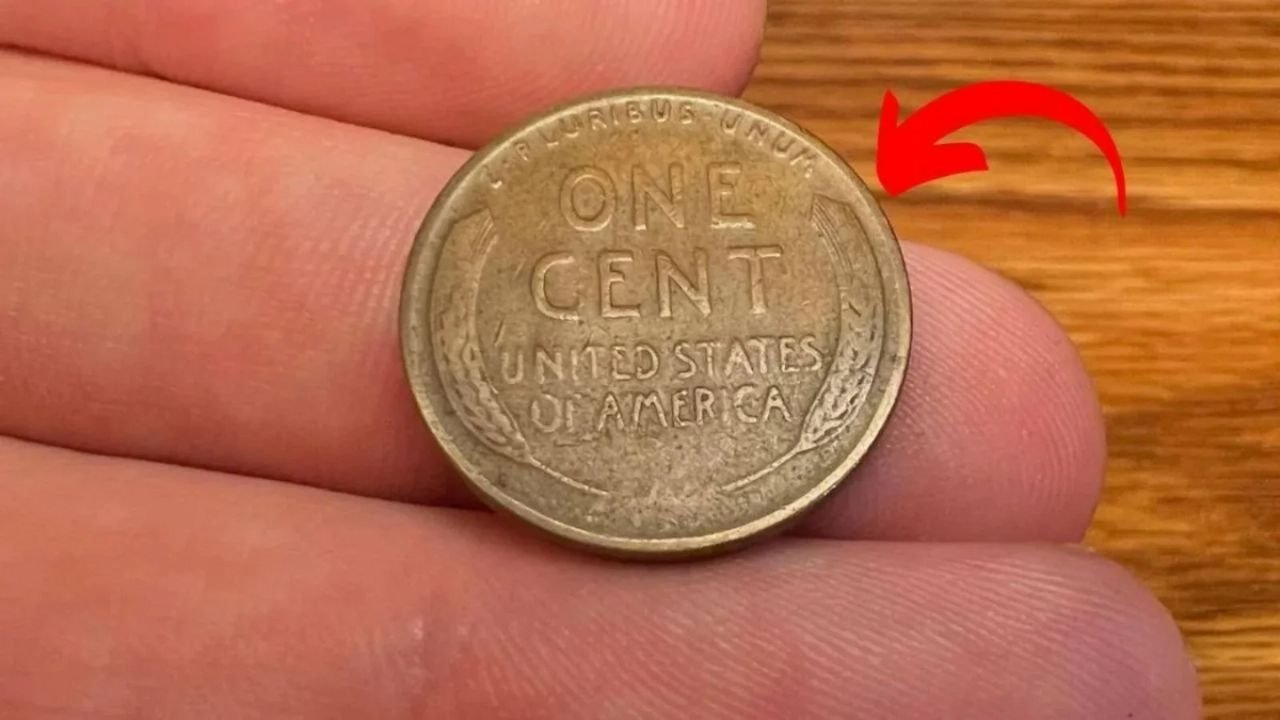The Lincoln Wheat Penny Valued at $3.3 Million, Still in Circulation, What if the ordinary penny you find in your pocket or spare change jar could actually be worth a staggering ₹27 crore? Sounds like a wild dream, but that’s the astonishing reality tied to one of America’s most legendary and rare coins — the Lincoln Wheat Penny. Specifically, the 1943 copper Lincoln Wheat Penny, a coin so rare that it once fetched a jaw-dropping $3.3 million at auction.
Yes, this humble coin, with a face value of just one cent, carries a fascinating story that intertwines American history, wartime urgency, and a collector’s dream. Even more thrilling is the fact that some of these priceless pennies might still be quietly hiding in everyday circulation. So next time you sift through your old coins, you might just stumble upon a fortune waiting to be discovered.
What Is the Lincoln Wheat Penny?
The Lincoln Wheat Penny is not just any coin — it’s a symbol of American pride and resilience. Introduced in 1909 to commemorate the 100th anniversary of President Abraham Lincoln’s birth, this penny was revolutionary for its time. It was the first U.S. coin to feature the portrait of an actual person, showcasing Lincoln’s dignified profile on the front (obverse).
Turn the coin over, and you’ll find two graceful wheat stalks arching along the edges, framing the inscriptions “ONE CENT” and “UNITED STATES OF AMERICA.” This iconic reverse design earned the coin the nickname “Wheat Penny.” The coin remained in production with this design until 1958, when it was replaced by the Lincoln Memorial design.
Among the many Wheat Pennies minted over nearly five decades, the 1943 copper variant holds a particularly special place for collectors and historians alike.
The Unbelievable Story Behind the 1943 Copper Lincoln Wheat Penny
During World War II, copper became a vital resource for the U.S. military, used extensively in ammunition, shell casings, and other essential wartime equipment. To preserve copper supplies, the U.S. Mint made a strategic decision in 1943: pennies would no longer be made from copper but from zinc-coated steel.
This wartime shift meant most 1943 pennies have a silver-gray steel appearance. However, amid the transition, a small number of copper planchets—blanks used to strike coins—were mistakenly left in the coin presses. These planchets were struck with the 1943 penny die, creating a tiny batch of genuine 1943 copper Lincoln Wheat Pennies.
This minting error produced one of the rarest and most coveted coins in American numismatics — an unintentional masterpiece that today commands millions at auction.
Why Is the 1943 Copper Lincoln Wheat Penny Worth Millions?
Only a very limited number of authentic 1943 copper Lincoln Wheat Pennies are known to exist—experts estimate fewer than 20 specimens have ever been found. This extreme rarity, coupled with its fascinating wartime history, makes the coin incredibly valuable.
But rarity isn’t the only factor influencing the price. The condition of the coin plays a crucial role. A well-preserved 1943 copper penny, showing sharp details and a glossy surface, can be worth millions of dollars. In fact, one such coin sold for an incredible $3.3 million, turning a one-cent coin into a priceless treasure overnight.
How to Identify a Genuine 1943 Copper Lincoln Wheat Penny
If you think you might have stumbled upon a rare Lincoln Wheat Penny, it’s worth knowing how to spot one. Here are some tips to help you identify a genuine 1943 copper penny:
- Check the date: It must be clearly marked 1943.
- Look at the color: Most 1943 pennies are silver-gray steel. A real copper penny from 1943 will have a warm, reddish-brown hue typical of copper coins.
- Magnet test: Steel pennies stick to magnets; copper pennies do not.
- Sound test: Drop the penny gently on a hard surface. Steel pennies produce a sharp, tinny sound, whereas copper pennies have a duller, heavier ring.
Even with these simple checks, caution is necessary because counterfeit coins exist. Many steel pennies have been plated with copper to fool collectors, and some dates are altered.
Beware of Fakes and How to Authenticate Your Penny
Due to the high value of the 1943 copper Lincoln Wheat Penny, it has become a frequent target for counterfeiters. Common scams include copper-plated steel pennies, altered dates, and subtle modifications to key details.
For this reason, professional authentication is essential. Reputable grading companies like PCGS (Professional Coin Grading Service) and NGC (Numismatic Guaranty Corporation) use advanced tools to verify authenticity, metal content, and condition. These companies provide certificates of authenticity and tamper-proof holders to protect and preserve your coin’s value.
Where Have These Rare Pennies Been Found?
Interestingly, not all 1943 copper pennies have come from elite collections or grand auctions. Some have been discovered in the most ordinary places:
Also Read : FTB $6000 Stimulus Checks 2025: Stimulus for Everyone? Eligibility & Payment Dates
- A child found one in loose change at a candy store in the 1950s.
- Others emerged from family coin jars passed down through generations.
- Some surfaced from forgotten, unopened rolls of pennies at banks.
This means the possibility of finding one tucked away in your own collection isn’t just fantasy — it’s a real, if slim, chance.
Other Noteworthy Lincoln Wheat Pennies Worth Collecting
While the 1943 copper penny grabs most of the spotlight, several other Lincoln Wheat Pennies are highly prized among collectors:
- 1909-S VDB: The very first year of issue, featuring the initials of designer Victor David Brenner. In pristine condition, it’s valued at over $100,000.
- 1914-D: Minted in Denver, this penny is rare and highly sought after.
- 1922 “No D”: An error coin missing the Denver mintmark due to a filled die. Scarce and valuable.
- 1955 Double Die: Famous for its noticeable doubled text, these coins can fetch up to $50,000.
Each tells a unique story that enriches the legacy of the Lincoln Wheat Penny series.
What to Do If You Think You’ve Found a Rare Lincoln Wheat Penny
If you believe you’ve uncovered a rare Lincoln Wheat Penny, here’s what you should do:
- Don’t clean it. Cleaning or polishing can damage the coin’s surface and significantly reduce its value.
- Handle carefully. Hold by the edges and store in a soft protective holder.
- Get it authenticated. Submit your coin to PCGS, NGC, or another trusted grading service.
- Explore selling options. If authenticated as valuable, you can sell through reputable dealers, auctions, or private collectors.
Why the Lincoln Wheat Penny Continues to Captivate Collectors
The allure of the Lincoln Wheat Penny lies in its blend of history, rarity, and the thrill of discovery. For decades, collectors and treasure hunters alike have been enchanted by the idea that a valuable prize might be hiding in plain sight — in jars of loose change, old collections, or thrift store finds.
This coin represents more than metal and design; it embodies stories of American heritage and the excitement of uncovering a forgotten treasure. Whether you’re a seasoned numismatist or a casual coin enthusiast, the Lincoln Wheat Penny holds a special magic that continues to inspire.
Final Thoughts
The story of the 1943 copper Lincoln Wheat Penny proves that extraordinary value often hides in the most unexpected places. From humble beginnings as a one-cent coin to becoming a multi-million dollar marvel, this penny is a remarkable testament to history, rarity, and a little bit of luck.
So next time you hear the faint clink of coins in your pocket, take a moment. You just might be holding a piece of history — a Lincoln Wheat Penny worth far more than its face value.
Some Important Link
| Telegram Group | Click Here |
| WhatsApp Group | Click Here |
| Home Page | Click Here |










